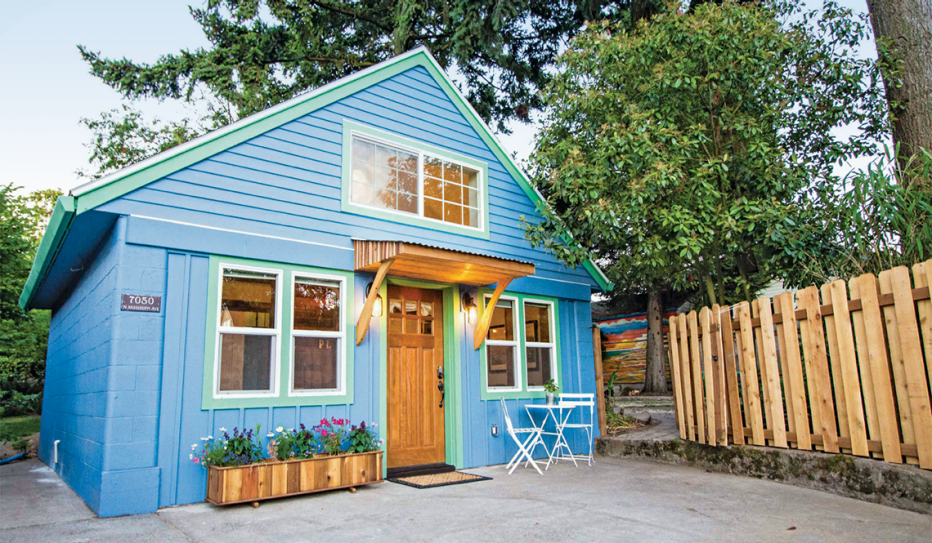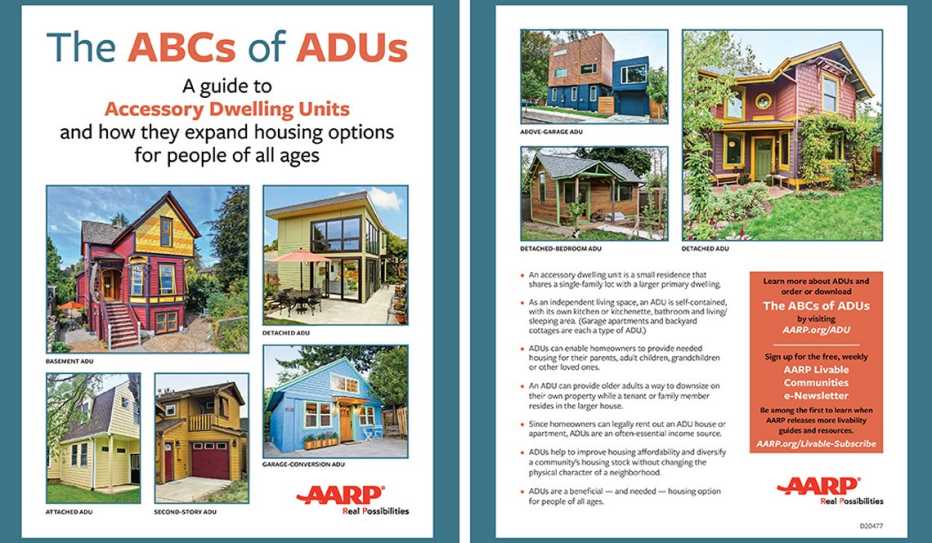AARP Hearing Center


Although many people have never heard the term, accessory dwelling units — or ADUs — have been around for centuries and are identified by many different names. To be clear about what’s being discussed:
- An ADU is a small residence that shares a single-family lot with a larger, primary dwelling
- As an independent living space, an ADU is self-contained, with its own kitchen or kitchenette, bathroom and sleeping area
- An ADU can be located within, attached to or detached from the main residence
- An ADU can be converted from an existing structure (such as a garage) or built anew
- ADUs can be found in cities, in suburbs and in rural areas, yet are often invisible from view because they’re positioned behind or are indistinct from the main house
- Because ADUs are built on single-family lots as a secondary dwelling, they typically cannot be partitioned off to be sold separately
- An ADU can provide rental income to homeowners and an affordable way for renters to live in single-family neighborhoods
- An ADU can enable family members to live on the same property while having their own living spaces — or provide housing for a hired caregiver
- Unlike tiny houses, ADUs are compact but not teeny, so they’re a more practical option for individuals, couples and families seeking small, affordable housing
- For homeowners looking to downsize, an ADU can be a more appealing option than moving into an apartment or, if older, an age-restricted community
- ADUs can help older residents remain in their community and “age in place”
ADUs are also known as ...
- accessory apartment
- alley flat
- back house
- backyard bungalow
- basement apartment
- carriage house
- coach house
- garage apartment
- granny flat
- guest house or cottage
- in-law suite
- laneway house
- mother-daughter house
- multigenerational house
- ohana unit
- secondary dwelling unit
- sidekick
Although most local governments, zoning codes and planners in the United States use the term accessory dwelling unit or ADU, these small homes and apartments are known by dozens of other names. The different terms conjure up different images.
(Who wouldn’t rather live in a “carriage house” than in an accessory or “ancillary” unit?)
Even if you’ve never heard of accessory dwelling units or ADUs, you have likely heard of — and perhaps know the locations of — some of the home types listed in the box that accompanies this article.
This article is adapted from The ABCs of ADUs, a publication by AARP Livable Communities. Learn more below.
MORE ABOUT ACCESSORY DWELLING UNITS
Visit AARP.org/ADU for links to more articles and to order AARP's free publications about accessory dwelling units.































































